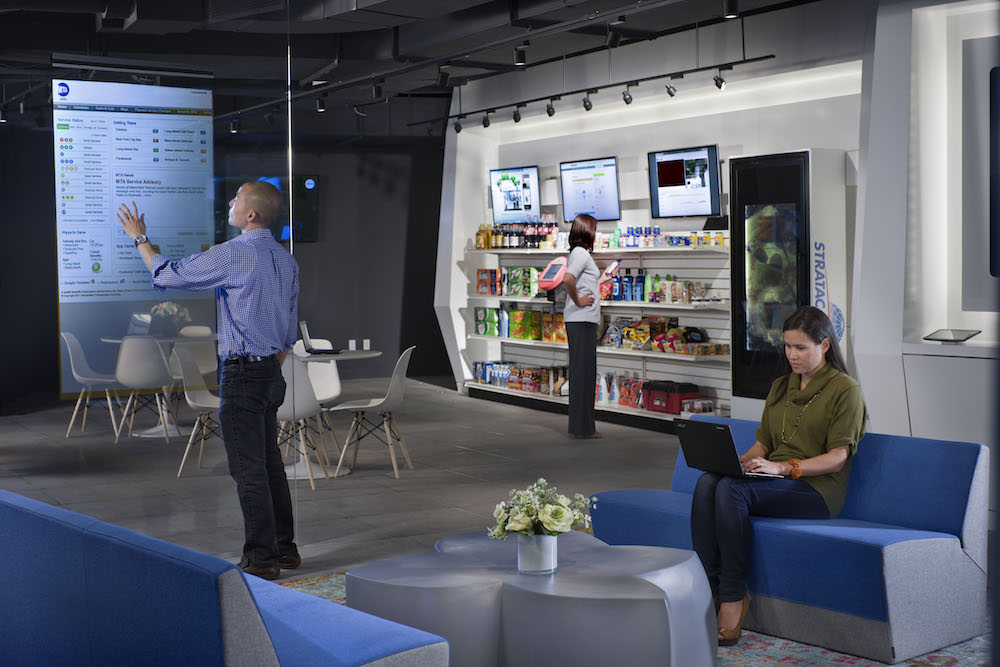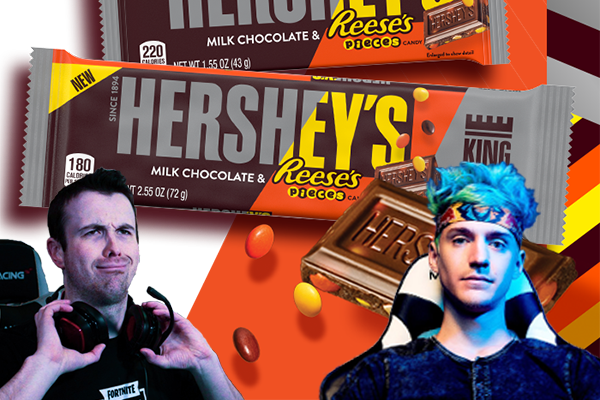Ahead of speaking at the Retail Tech Strategies for 2019 panel at NYRIW, UM Worldwide EVP and global chief innovation officer, Chad Stoller, shares insights on how DTC brands have cornered the market on consumers’ attention by capturing it at its source—on social media—and how other brands can take a page from their book to compete in a digitally and socially driven landscape
Marketing may be a game of influence, but the source of that influence is rapidly shifting, says Chad Stoller, EVP and global chief innovation officer at UM Worldwide, the creative media agency operating in over 100 countries. As that source transforms from mass media and established cultural gatekeepers to social media, branding and distribution models are adapting to a new reality of social discovery channels and commerce, something the success of direct-to-consumer brands proves.
As part of New York Retail Innovation Week, Chad and UM will be hosting a diverse panel on Retail Tech Strategy for 2019 with voices from up-and-coming brands, established brands and social platforms themselves to explore the secret sauce behind how direct-to-consumer brands have used social media so successfully, and their lessons that others can apply to enable future-proof consumer relationships. Ahead of the event, PSFK caught up with Chad to find out more about how UM helps brands like Johnson & Johnson, Coca-Cola, Hershey’s, CVS Health, Sony and more do just this.
Before launching into specifics of UM Worldwide, could you speak about some of the most significant consumer and industry trends that you’ve noticed lately, and that you’re leveraging in your work?
It’s an exciting time to be working in innovation—technology is evolving at an accelerating rate, and it’s shape-shifting the future of consumer attention and consumers’ relationship to brands. We’re in the fourth quarter of the shift to mobile—smartphone hardware is as good as it’ll be, which is why we’re seeing an increase in services that add value to hardware—and we’re starting to look ahead to what the next major platform shift will be.
Augmented reality is a strong contender, and we’re already seeing major investment in the platform from Google, Apple, Facebook and Amazon. We expect AR to start on mobile, and eventually migrate to wearable devices like glasses and contact lenses —it’s probably the only thing that will get us to look up from our phones. While AR hardware is likely still 3-5 years away, we do expect the same camera-based behaviors to have a big impact on discovery and commerce.
We think 2019 will be a big year for visual search, with tools like Google Lens, Pinterest Len, and Snapchat’s Amazon partnership turning every object in the world into an opportunity to “learn more” or “buy now” via the smartphone camera.
Every year we publish an Outlook to understand how consumers’ interactions with technology are changing and why consumers care about the things they care about—what’s certain is there’s never been a more exciting time to watch and learn. Other things we’re keeping our eye on in our Outlook are the smart assistant wars and the impact on connected home and beyond, Disney and Apple’s upcoming OTT launches and how that will change not only TV but the way digital and physical goods are bundled, the rise of esports and correlated implications on traditional sports and live content, and looming distrust in technology platforms and how regulation may alter their trajectory.

Are there any gaps that you’ve noticed in how brands engage with their audiences through media? If so, how are you working to help brands fill those gaps?
It’s never been harder for a brand to compete for consumer attention. Expectations tend to move across categories, and experiences travel from urban to rural at the speed of social. Consumers tend to move more quickly than advertisers, so a big part of our role is staying close to where attention is heading and helping brands get to where consumers are, faster.
There’s some magic in how these direct-to-consumer brands have seemingly overnight amassed such cultural relevance, and there’s a lot larger brands can learn. These brands are relentlessly consumer-focused, and understand that if a consumer is living their whole life on a smartphone, brand tools like mobile customer service and frictionless checkout are table-stakes. And because they’re mobile-native, they understand the role of data in building personalized, responsive experiences, and use that 1:1 data to optimize product development and marketing. The result? Products and services that feel like they were designed “just for me,” with hyper-targeted, hyper-personalized marketing that reaches consumers in the media channels where they’re spending time.
We have a Partnerships team dedicated to scouring the startup landscape and separating the next from the rest. In advising brands, perhaps the most impactful, breakthrough meetings we have are when we pair our startup partners with big brand clients. Our clients appreciate the fact that we bring outside thinking inside, imbue the organization with an entrepreneurial mindset, and get them closer to the source of where consumer attention is heading. Partnerships are a powerful way we bring innovation strategy to life, with smart activations that connect brands with consumers.
Tell us a bit about UM and the IPG Media Lab—How did it all start, and how do you approach helping brands build successful media that engages their consumers?
Part of the Interpublic network, the IPG Media Lab identifies and researches innovations and trends that will change the media landscape and how brands engage with their audiences. Since 2006, the Lab has worked with our clients and with industry partners who can help them best adapt to disruptive change. Our expertise, resources and consulting services also help to inform the learnings, strategies and business outcomes of all Interpublic agencies.
Our job is to make sure media investment follows media interest. That doesn’t happen in a boardroom, and that doesn’t happen in isolation. Our analysis, workshops, and immersions are designed to cultivate diverse perspectives and get brands in front of real consumers, whether that’s looking at how expectations are changing in food delivery to help a financial services client understand the on-demand economy, co-curating ideas with our startup partners and real consumers, or taking clients to ComplexCon to see how drop culture is changing retail. We work with our agencies’ Strategy teams to how audience behavior is shifting and develop innovation strategy, and then pair our agencies’ Planning teams with startup partners to activate on the strategy.
What are some insights you have into how consumers want to interact with their brands across media today? What have you noticed in your research?
We’re entering a market society where every aspect of our lives that can be quantified will be productized. We’ve been selling health and fitness as products for decades, but now they’re becoming hyper-personalized products, from using DNA tests to optimize diet and exercise for our individual bodies, to using artificial intelligence to adapt to our behaviors and finally (finally!) help us break bad habits. There is a purchasable solution for every problem, often powered by data that claims to be able to know us better than we know ourselves.
As the market extends to every part of our homes and bodies, only select brands will be granted access to our most private spaces. That trust will include confidence in the product or service itself, of course, but also confidence in the ethics and politics of the company behind it. It may be increasingly impossible to appeal to every consumer — even as politics are becoming more divisive, poll after poll indicates that consumers are looking for brands that are willing to take a stand for their values, with a recent study finding that 58% of US consumers believe that brands should share their opinions on social media.
The brands that can navigate this successfully will be granted unprecedented access to consumers, with new channels for direct connection and unique sources of consumer data. This will often be delivered as a hybrid of product and service: Peloton, with its high-end home workout gear that’s tied to a group class subscription, is an example of how health and fitness might work. Or Ikea’s acquisition of TaskRabbit, to provide more robust delivery and assembly of furniture, an example of filling holes in the company’s strategy of flat-pack furniture as consumer expectations have shifted.

You concentrate on emerging media technology. Could you speak about some of the most exciting new opportunities out there right now, as well as where you see brand media heading in the future?
It’s no secret that OTT, and especially Netflix, has become an increasingly large part of consumers’ media diet. With the upcoming launch of Apple’s premium TV service, a revamped HBO thanks to AT&T, and Disney+ following the Fox acquisition, we’ll not only see cord cutting accelerate—we expect to see video content packaged with other content like news and music, and eventually even experiences like travel or education. Importantly, since the next wave of television is unlikely to carry advertising, this shift to subscription viewership will also mean a shift in how to reach consumers away from traditional television marketing.
Marketing will still exist in these platforms, just like it does on Netflix with experiments in product placement a la Stranger Things, but it just may be more subtle. For brands to connect with their consumers in the age of ad-free television, they may need to take a page of the direct-to-consumer brands and become a content creator that can directly engage with the customer base via digital channels.
The alternative is to look elsewhere for the scale of television, specifically, the reigning duopoly of digital ads: Google and Facebook. While the new wave of television may steal the attention given to premium content, YouTube and Instagram stand to benefit from the long tail of video content shifting to digital, and are well positioned to help brands and advertisers adapt to the new paradigms. And unlike traditional television, digital video ads are easily targeted, measured, and optimized.
Can you share an example of a particular client that you worked with, and what you helped them achieve?
The Hershey Mashup campaign was Hershey’s first endeavor into the esports and gaming space. The campaign was used to promote the launch of their new Hershey’s Milk Chocolate and Reese’s Piece’s mash-up bar, before it went on sale in late November, through a sponsored co-stream leading into TwitchCon.
As two iconic chocolate brands, we knew Hershey’s and Reese’s would be the ultimate collaboration. We kicked off the Hershey Mashup campaign with a sponsored influencer co-stream on Twitch with two of the most popular gaming influencers, Ninja and DrLupo, playing the hottest game right now, Fortnite.

At TwitchCon, we wove the new Hershey mashup bar into gaming culture to get gaming fans talking about the bar by leveraging heavy show floor foot-traffic to promote the launch of the bar, hand out exclusive samples, and directly engage with gamers through branded photo booths, exclusive sampling, and selfie opportunities. The program exceeded KPIs by 5x, generated a significant increase in earned media, and grew brand love with a hard to reach audience for Hershey’s.
What do you hope to focus on and share at your NYRIW event?
Marketing is ultimately a game of influence, but the source of that influence is rapidly shifting from mass media and established cultural gatekeepers to social media. The rise of direct-to-consumer brands is prime evidence of this shift in how branding and distribution models adapt to this new reality of social discovery and commerce.
Our hope is to curate a diverse panel of voices from up-and-coming brands, established brands, and social platforms themselves to explore the secret sauce behind how direct-to-consumer brands have used social media so successfully, and the lessons that brands, agencies, and platforms can apply to future-proof consumer relationships. This is more important than ever, because the brands that are savvy enough to intercept influence at the source, on social media, will continue to maintain relevance with the next generations of consumers.
For more on this topic, come listen to the Retail Tech Strategy for 2019 panel on January 15, part of New York Retail Innovation Week, discussing some of the biggest consumer shifts that are driving the need for technology at retail and how brands can best implement it to meet their consumers’ needs. Tickets available now!

